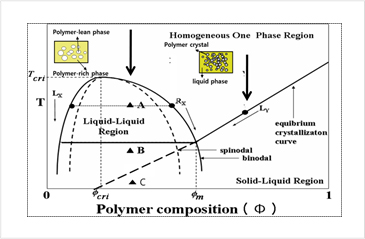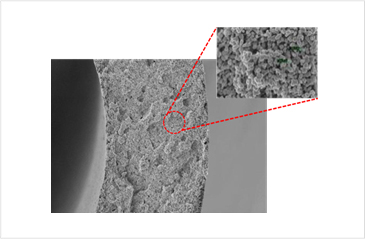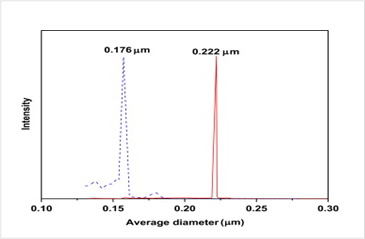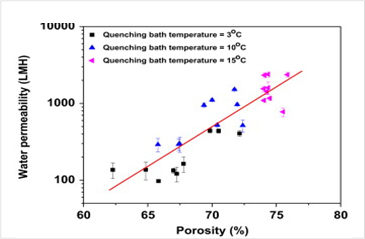UF / MF Membranes for Water Treatment
Thermally Induced Phase Separation (TIPS) process is one of the main phase inversion processes with unique potentials to prepare membranes. Mainly, TIPS process can prepare membranes with very narrow pore size distribution and higher mechanical properties compared to those prepared from Non-solvent Induced Phase Separation (NIPS) process.
TIPS process consists of the follow steps:
- 1)A homogeneous solution is made by mixing a polymer of interest with a diluent and heated above the melting temperature
of the polymer. - 2)The hot solution is cast or spun then cooled at a desired rate to induce phase separation and solidification. The rate of cooling is a critical factor that determines the membrane performance.
- 3)Finally, the residual diluents are extracted from the membrane.
In MBL, our research is mainly focused on the preparation of UF/MF membrane via TIPS using environmentally friendly diluent, and understanding the effect of diluent and fabrication parameters on final membrane morphology and performance.
- Fabricate flat sheet and hollow fiber membranes with narrow pore size distribution, high porosity, and high mechanical properties.
- Find and study potential green diluents which have low toxicity and low environmental impact.
- Understand the effect of additives and post-treatment such as stretching on the final membrane morphology and performance.
 Phase diagram
Phase diagram SEM (Symmetric structure)
SEM (Symmetric structure) Narrow pore size distribution
Narrow pore size distribution Pure water permeability
Pure water permeability
Membrane Distillation (MD)
Membrane Distillation (MD) is one of the thermal driven desalination processes. Since only the water vapor can permeate through the MD membranes, the theoretical salt rejection is 100 %. The current state-of-the-art desalination process based on membrane technology is the reverse osmosis process. However, when high concentration solution is used as feed, MD becomes more efficient than reverse osmosis, as MD process does not have to overcome the osmotic pressure. MD can be utilized for various applications such as desalination, concentration of fruit juice, and pharmaceutical and semiconductor industry where high purity water is required at low operating pressure and temperature. Our group is developing macro-porous and hydrophobic membranes for MD application.










































